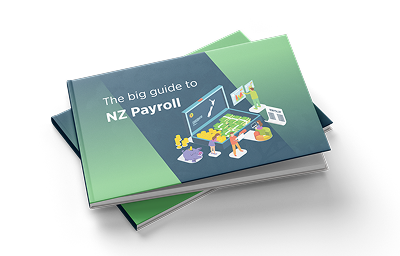More and more organisations have been switching to a cloud based payroll solution. In fact they’ve been taking nearly all their software to the cloud. In simple terms, cloud based software is provided ‘as a service’ with all the processing power happening securely in off-site data-centres. You could compare these places to a nuclear bunker. The average datacenter has sophisticated physical and electronic security; far greater than the average business can provide within its own premises. Using software in the cloud means you don’t need an internal IT department and typically won’t need your own on-site IT server room. When you get stuck, you have an on-demand support team to turn to for help. Cloud based payroll software doesn’t just replicate your current processes online — it makes your team’s life easier and more productive.
Payroll may not be the biggest department in your organisation, but it is one of the most important. A slip-up when it comes to paying your people can not only lead to internal revolt, it can leave your business exposed to serious forms of legal action. It’s funny how employees view the payroll department. It’s as if money ‘magically’ appears in their bank account at the end of each month — yet behind the scenes so much goes into ensuring every pay packet has been meticulously calculated. In recent years life has become harder for payroll teams thanks to changes in legislation and the growing trend towards ever more flexible forms of employment. Despite this complexity, payroll software providers have been working hard to make payroll less of a frantic and stressful experience each month.

If you ask the average payroll manager what keeps them up at night, they’ll likely reflect on some of the following:
- The business has outgrown its payroll software and the team spend a lot of their time doing manual calculations in spreadsheets
- They’re not sure if their payroll system is making calculations based around the latest local legislation (especially when it comes to leave, holidays and sick pay)
- Employees have different employment contracts, have different payment frequencies, work part time or get paid per job completed (rather than by the hour)
- Payroll software can’t handle multiple payrolls at once and only one payroll can be processed per day
- Our company is made up of multiple legal entities — and our payroll software just can’t handle that
- Our people want to know how much leave they have left — and we’re overwhelmed with these requests
- Pulling off even the most simple of reports takes forever
If these payroll gripes sound familiar to you, these are just some of the problems that cloud based payroll software can solve.
One of the biggest payroll headaches that teams talk about is the complexity of the Holidays Act in New Zealand and the award structures setup in Australia. The New Zealand employment legislation is up there as one the most complex in the world. It was only implemented in 2013 and since then a whole string of amendments have been made. Then there’s the sheer number of public holidays that need to be taken into account. You’d think in this day and age, payroll software would be able to easily interpret something like the holidays act? Well you’d be wrong!
The NZ holidays act is so complex that even government departments have been unable to interpret it — leading to public enquiries and investigations. Do you remember New Zealand’s worst payroll disaster? The schools system spent $56.8 million on a failed payroll system that left 90,000 teachers and education staff underpaid, overpaid or not even paid at all. Then there was the $38 million that the NZ post had to set aside to settle owed holiday pay to over 22,000 people. Unbelievably, even the NZ Ministry of Business, Innovation and Employment didn’t know how to interpret the holidays act and repeatedly miscalculated pay for their people.
Older payroll software that wasn’t specifically designed for New Zealand or Australia is unlikely to meet the latest legislative requirements around tax, deductions, leave and holiday pay. If you currently use a local (or on-premise) payroll system, when was the last time it was updated? That’s one of the key advantages of a cloud based system like Jemini. Unlike locally based software which can rapidly date, you’re benefiting from access to the latest version with automatic updates that reflect the latest local rules.
COVID-19 and the ongoing series of lockdowns left many a payroll department with its knickers in a twist. First of all, payroll departments tend to be small and ‘traditional payroll software’ historically needed a lot of special time-intensive training. Payroll is one of those specialised tasks where it’s practically impossible for someone just to fill in and pick up the reigns. This left many organisations in a pickle during the pandemic. In many cases payroll specialists were too ill to come to work. For others, the lockdown and the lack of physical access to office-based systems meant payroll had to be completed with great difficulty. With cloud based systems, multiple people can access securely off-site. What’s more, the latest generation of systems are far more user friendly. Forget old-fashioned green screens with manual re-keying of data. Payroll software has advanced dramatically, has a user-friendly interface and can even be fully integrated with your HR system and time and attendance tools. Talk about improved productivity.
Here’s some of the other standout features to look out for in online payroll software:

Self-service
Let’s face it, who doesn’t like a bit of self-service? With cloud based payroll software, your teams can access their payslips securely online. They can see in seconds exactly how much holiday they have left — and can even raise leave requests online. Can you imagine how much time your payroll team will save when they are not inundated by email requests? This is amplified even more with the proliferation of remote and hybrid work.
Proactive alerts and warnings
No matter how careful you are, errors can slip through. Systems like Jemini provide an extra layer of defence. It can spot and alert you to an unexpected item in your payroll or an unusually high or low amount.
Date effectiveness is here
Many cloud based payroll systems are date effective. This means that if people join your organisation between pay periods, the system will automatically calculate the pro rata pay. Saving you from frustrating time spent knee-deep in spreadsheets.

An up to the minute view
A great number of older payroll systems rely on a batch process for processing leave and accruals. That can leave you locked out from essential data that you need access to. Many cloud based systems are accurate any minute of the day; so you can share information with confidence.
Make light work of complicated pay calculations
Part-time employment, overtime, piece-rates, allowances and even disbursements. Cloud based payroll systems can make these calculations straightforward.
Do you need to retrospectively apply back-pay?
It’s not often that back-pay needs to be processed, but it does happen. Respective back-pay calculations can leave you pulling your hair out with frustration. Whilst your current payroll software might not be ripe for the challenge, the latest generation of payroll systems can do this special party trick. Just set the appropriate award rates and let the system do the rest. Abracadabra - you’ll know the amount due to each person.
Payroll doesn’t need to be painful. In fact there’s opportunities to make it pleasantly productive. As we enter 2022, think about the opportunities and added-value that an updated approach could bring for you. By thinking about the cloud, you have the opportunity to future-proof your department, being proactive rather than reactive and having the confidence that you’re comfortably compliant. Here’s to a fruitful new year for payroll.
Explore more...
Share this page
Ready to transform your HR & Payroll process?





